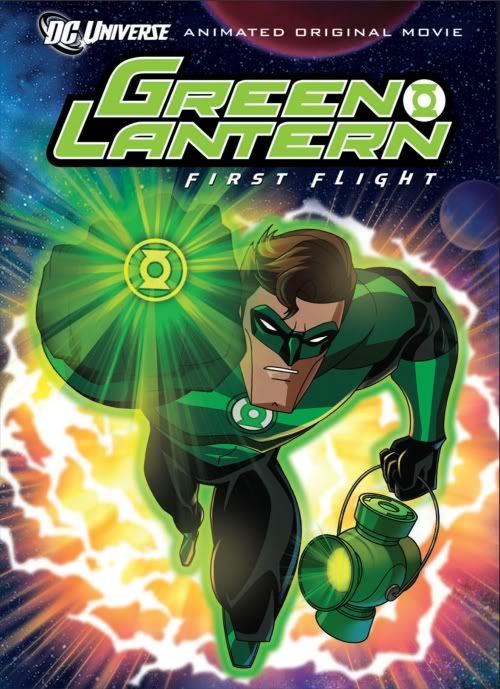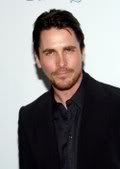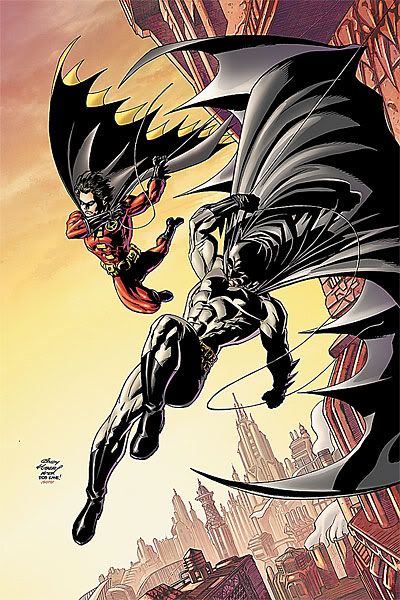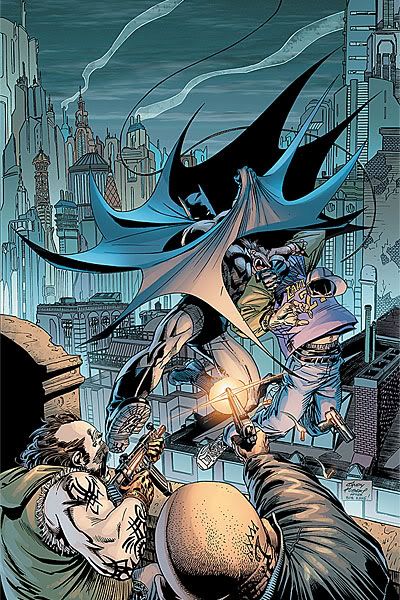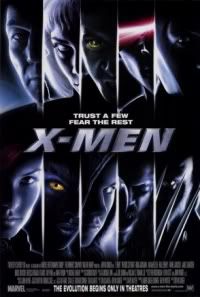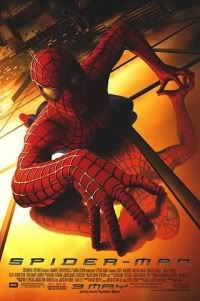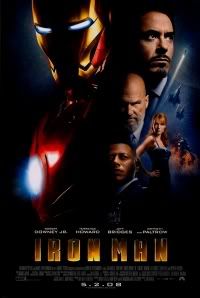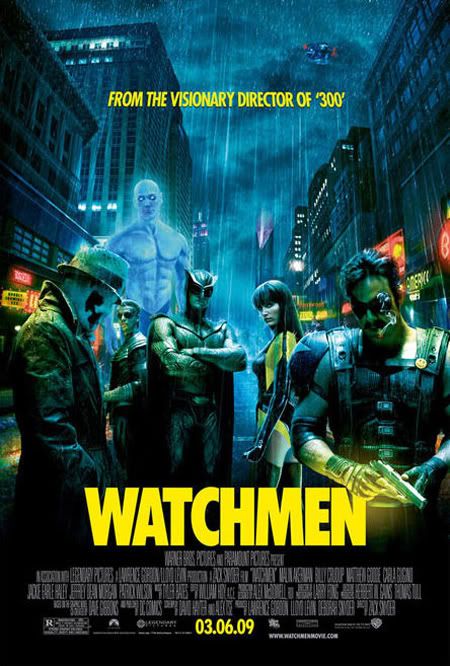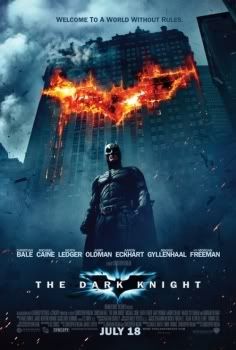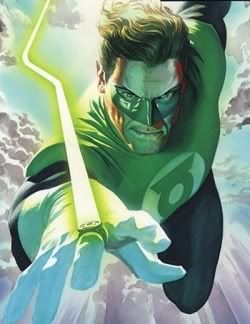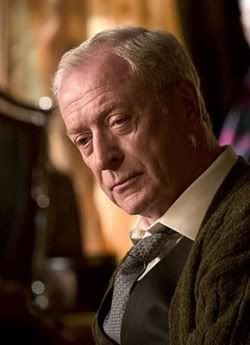by Marc T. Newman, Ph.D.
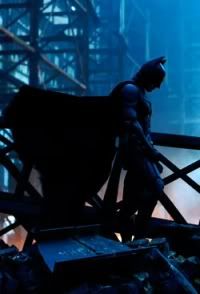
The Dark Knight has brought in more money at the box office in its first eight days of release than its predecessor, Batman Begins, did it its entire domestic run. Some point to actor Heath Ledger’s untimely death as a factor, others to his Oscar-nomination-worthy performance as The Joker. Both certainly play a role. Either might get fans into seats at least once, but neither can explain the multiple viewings that blockbuster films of this caliber must attract to post the kind of numbers that The Dark Knight boasts: top opening night of all time, top weekend of all time, top weekly box office of all time – which it accomplished in six, not seven, days, and fastest film to $300 million, cutting the time to the record from sixteen days to only ten.
So what drives audiences to repeat viewings of a film that is, by any standard, a dark film set in a dystopian world with, at best, an ambiguous ending? I would like to argue that The Dark Knight is resonating with film audiences because it has tapped into a collective moral angst about the condition of our culture, and the schizophrenic attitudes many have about what it takes to set things right. In line with our culture of narcissism, regardless of what the mirror shows, we enjoy looking at ourselves. The Dark Knight reflects our culture’s troubling truths: our downward slide into nihilism, the impossibility of continuing to draw from a moral well without replenishing it, and the difficulty of wanting heroes while inhabiting a post-heroic age. The world of The Dark Knight looks both grim and familiar – it is our own, writ large.
Sliding Toward Nihilism
Gotham City has never been the poster child for the model American metropolis. There are good reasons why Batman operates there instead of, say, Des Moines. But even in its underworld there was always an odd sense of orderliness. The job of the crooks was to commit crime. The police had a duty to catch them. There was planning and execution. Even among thieves there was occasionally muted cooperation and a warped code of “honor.” This was a world, for better or worse, that operated under rules.
The Dark Knight introduces The Joker as the harbinger of a new immoral order. He describes himself to District Attorney Harvey Dent as a kind of force of nature: “Do I really look like a guy with a plan? You know what I am? I am a dog chasing cars. I wouldn’t know what to do with one if I caught it. I just do things.” But moments later, he reveals his true identity, “Introduce a little anarchy, upset the established order, and everything becomes chaos. I am an agent of chaos. Oh, and you know the thing about chaos? It’s fear.”
The crimes committed in The Dark Knight -- murder, kidnapping, bank robbery, and terrorism -- are not otherworldly; they are the evening news. The Dark Knight merely consolidates them in a single city; creating a recognizable microcosm of crime. But unlike crimes of the past, where someone might do something evil to obtain something good – for example, rob someone to get money – The Joker simply revels in lawlessness. He is an icon for the random attacks against innocents by strangers and the senseless drive-by shootings that have recently plagued our nation. We live in a world that no longer makes sense. We see in The Dark Knight a fictional expression of our own world gone mad.
Under interrogation, The Joker rejects the idea that his is some alien ideology. Providing his analysis of the bastions of rules and laws – the police department – The Joker explains, “You see, their morals, their code, it's a bad joke. Dropped at the first sign of trouble. They're only as good as the world allows them to be. I'll show you. When the chips are down, these civilized people, they'll eat each other. See, I'm not a monster...I'm just ahead of the curve.”
The important question to ask is whether The Joker is right.
An Inconvenient Morality
The Dark Knight does not provide any easy answers. The optimistic viewer will find plenty of examples of people trying to do the right thing, engaging in self-sacrifice, and taking time to examine themselves before acting. But the film balances these with otherwise upright citizens who will try to engage in blackmail if they think they can get away with it, who will shoot an innocent man on orders of The Joker in response to the fear of what The Joker might do if they don’t, who will violate the law and terrorize a person in police custody to get the information they need to prevent another crime, who will democratically vote to slaughter a boatload of prisoners, who will deliver an innocent man to death to save a relative, who will violate the rights of millions of people in order to capture a dangerous man, and who will openly lie to the citizens to maintain their faith in the system.
Is this imagery unfair?
We live in an era in which, for the majority among us, truth and morality do not matter. In 2002, researcher George Barna revealed some startling statistics about public morality. What Barna discovered in his study was that only 4% of all teenagers believe in moral absolutes. And only 9% of Christian teens believe in moral absolutes. Startlingly, only 32% of Christian adults believe in moral absolutes. Study after study shows us to be a nation of liars and opportunists. When people say that there are no moral absolutes, they reveal something about their character. Rules apply when convenient, and can be discarded when the cost of following them appears to exceed the temporal benefits of adhering.
Of course, living in a chaotic world of moral anarchy presents many dangers. The quickest way to expose the false nature of nihilists is make them victims of crime. Lie to them, steal from them, and like everyone else they will cry, “Foul!” But in a culture taught that morality is subjective and relative, and that truth is nothing more than a social construct, how often can we go to our collective historical moral well and expect to find anything there to draw from? How can a culture that abandons morality replenish that well? And once we draw too deeply, exhausting the reserves created by our forebears, who will be there to champion our cause?
Seeking Heroes in a Post-Heroic Culture
Batman, as currently conceived, is the only help in the time of post-moral need. Bruce Wayne admits to his butler, Alfred, and his former girlfriend, Rachel Dawes, that Batman is an unusual sort of hero. Wayne recognizes that a vigilante hero might be the only thing standing between Gotham and bedlam for now, but that kind of order cannot be maintained. Trying to do right, while engaging in illegal activities, is a tightrope act. Gotham City needs a moral leader who can do the right thing while living his life out in the open (what used to be called “character”) -- a man like Harvey Dent.
The connection between these two strangely complimentary heroes reveals the ultimate agenda of The Joker. Motivated by chaos and anarchy, The Joker sets his sights on destroying all bastions of morality, public or private. As he continues to ratchet up the price that needs to be paid for following the rules, Dent begins to crack. Ultimately, as all followers of the comic book story (or viewers of the pre-Christopher Nolan films) know, Dent is overwhelmed, and is transformed into the villain Two Face.
Batman is not a public figure, but his rule-based morality is a constant challenge to The Joker’s ascendant immorality. The Joker wants to break Batman, even at the cost of his own life. In response to the Joker, Batman says that he only has one rule (it is implied that he tries very hard not to kill people), and The Joker replies that this is the one that Batman will have to violate in order to save one of his friends. When Batman acts virtuously in the face of immense temptation to do otherwise, The Joker accuses him of a “misplaced sense of self-righteousness.” In the end, Batman is forced to take upon himself the sins of another, and perform the services of a scapegoat, an outcast, in order to save the city that rejects him.
Thomas de Zengotita, in his book Mediated: How the Media Shapes Your World and the Way You Live in It, argues that we are in the age of the twilight of the heroes. In a relativistic world, heroes begin to look arrogant. As de Zengotita notes, “Who do they think they are?” If everyone is “special” in his or her own way, why should anyone be “more special” than anyone else? Why should any other person’s morality trump my morality? What makes the great thinkers' thoughts so “great” anyway? One way to assure their death is, at every turn, to try to chop them down to size. To de Zengotita, this represents an attractive outcome. He believes that local heroes will come to replace great heroes. What he fails to understand, and what philosopher Alasdair MacIntyre in After Virtue understood completely, is that it is the culture’s stories of great heroes that inspire the actions of others. Take that inspiration away and the world is likely to look very different in a few short years.
In an early scene, a copycat Batman questions the right of the genuine article to fight crime while denying others the right to do the same. Batman has been successful in cleaning up the streets of Gotham. But when The Joker demands that the Batman be unmasked or else many people will die, in a heartbeat the citizens who have thrived under the Batman’s protection are screaming for his arrest. Heroes traditionally embody a sense of ideals that people, even if they cannot emulate them perfectly, still value. But in a relativistic world we find ourselves paradoxically wanting a hero, while simultaneously rejecting the morality that makes heroes possible.
Inexplicable Shock
In The Abolition of Man, C.S. Lewis described our current predicament well: “And all the time – such is the great tragi-comedy of our situation – we continue to clamour for those very qualities we are rendering impossible...In a sort of ghastly simplicity we remove the organ and demand the function. We make men without chests and expect of them virtue and enterprise. We laugh at honor and are shocked to find traitors in our midst.”
The Dark Knight does our culture a great favor. It uses a popular media format, fictional film, to magnify our culture and reveal its unsettling end. The Joker is a type of Nietzschean Superman – a person whose word is law, and the undoing of all other laws. To those who would reject the notion of The Joker as the natural end state of moral relativism, what objection could be raised? Without any transcendent morality to which a culture can call upon to judge actions, we would be bereft of any means of calling those who would do evil into account. We would lack the vocabulary to even call their deeds evil.
But like Scrooge, visiting his own grave with the ghost of Christmas future, our culture's end is not yet etched in stone. The Dark Knight provides for us a cautionary tale, but not one entirely without hope. It is possible for our culture to tumble into anarchy and chaos. We can even choose to act surprised when it does. But no amount of exclamation will save us. The message of The Dark Knight is that each of us needs to respond to the challenge to be the kind of person who is committed to discovering the right thing, and then doing it – not furtively in the darkness – but fully in the light of day.
Marc T. Newman, PhD., is the president of MovieMinistry.com, an organization that provides sermon and teaching illustrations, Bible studies and discussion cards, drawn from popular film, and helps the Church use movies to reach out to others and connect with people. Requests for media interviews, or reprints of this article, can be made to marc@movieministry.com
